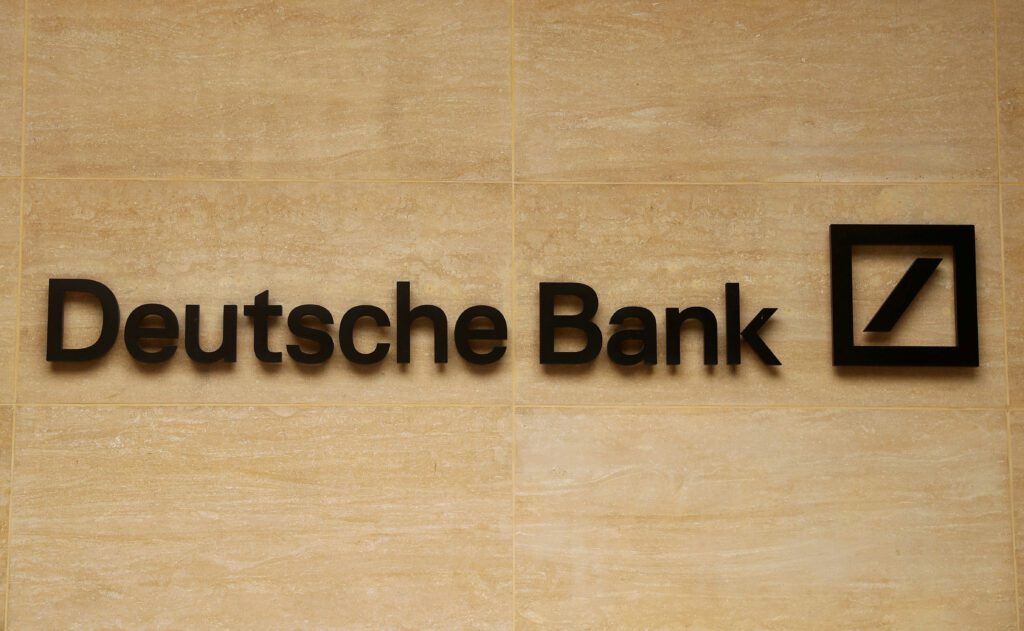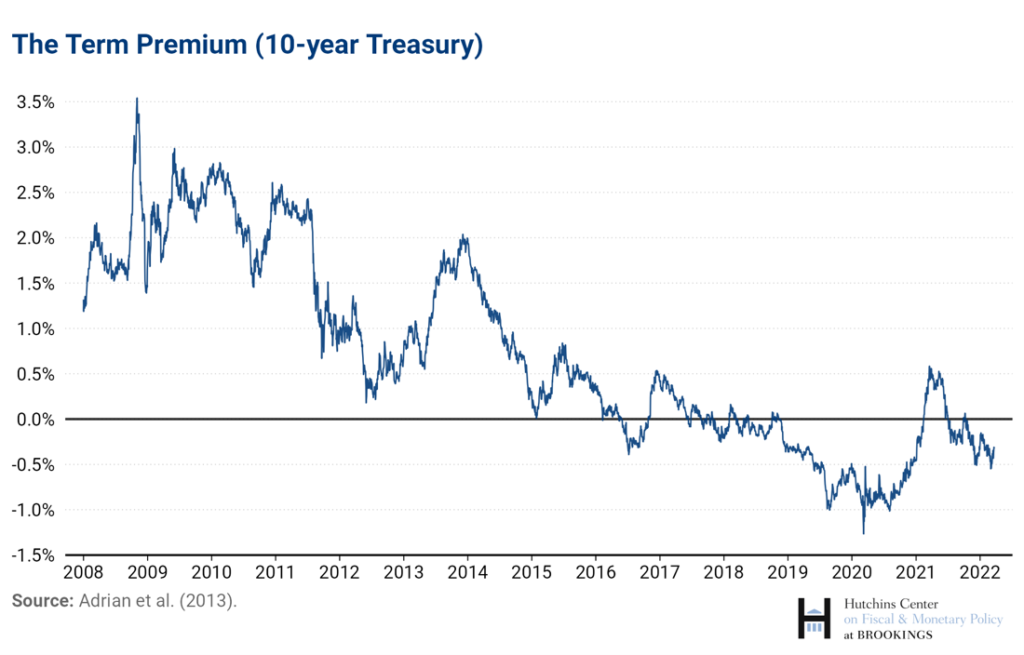Part 2: Paul Tucker | U.S.-Europe Relations

System Predicated on What?
Longevity & Anti-Aging | ‘Snake Oil’ Salesmen

Separating the science from pseudoscience. How Metformin works
Dani Kahneman | Fairwell to an Intellectual Giant and Legend

The founding father of Behavior Economics passed away. His influence stretches far beyond academia
What Is Time? And Does It Really Exist?

Time for non work-related topic during the holidays
CBDCs | Political quantum entanglement & polarization

In this update we explain the notion of Quantum Entanglement through the lens of US political polarization and central bank digital currencies (CBDCs), instead of the traditional way of particle spins.
FRC | Game theory, bank runs & plea deals
We try to identify the Nash equilibrium bailout for First Republic Bank.
DB CDS | Diamond-Dybvig bank runs | CIA profiler

It’s less that the current banking system is weak, but instead, those leading the organizations are.
Yield Curve | Mishkin | Back to the Future

A look back at Fred Mishkin’s original paper.
Greening Asia for the long haul: What can central banks do?

Here in Hong Kong, Category 8 typhoons used to be infrequent. Just as floods in Germany and massive wildfires in California were disasters we might see every decade or so. Sadly, this is no longer the case. In one week alone this October, Hong Kong saw two Category 8 typhoons. Earlier this year, floods devastated parts of central Germany, and California saw five of the largest wildfires in its history in 2020. Hong Kong, Germany, and California are not outliers. Extreme weather conditions have been documented in much of the world.
It is widely recognized that climate change implies more frequent and severe weather events, greatly increasing the physical risks to financial and economic stability. In the absence of urgent action, the impact will be widespread and affect most countries, people’s lives and livelihoods, and many industries. The financial sector will be no exception.
Central banks have an important role to play in responding to this challenge. They are interested in these issues for at least three reasons: (i) preserving financial stability as societies move toward reducing their carbon footprints; (ii) diversifying the investments of central bank reserves to minimize unnecessary risks; and (iii) in keeping with their mandates and expertise, providing support to global efforts to achieve the objectives of the Paris climate accord.
The Asia-Pacific region has the largest need for infrastructure investments, around $1.7 trillion per year for developing Asia alone, according to the Asian Development Bank (ADB). Much of this needs to be green investment. It is also among the most vulnerable regions if actions to combat climate change are not taken urgently. At the same time, Asia has, relatively speaking, an extremely large pool of foreign exchange reserves, at around $5.7 trillion by the end of 2019. So, there is a clear case that we need to find a way to bring these two together and do so creatively and safely. The BIS Asian Green Bond Fund is an attempt in this direction.
The fund is designed to provide central banks with opportunities to invest in high quality bonds issued by sovereigns, supranationals, and corporations that comply with strict international green standards. It has two distinct features. First—compared to the BIS’ previous green bond funds—it has a broader group of eligible issuers. It will invest in corporations, including financial firms, because much of the financing in Asia is through commercial banks rather than directly from capital markets. Second, the BIS has engaged with multiple international financial institutions and development finance institutions—the ADB, the Asian Infrastructure Investment Bank, the World Bank, and the International Finance Corporation—to explore opportunities for collaboration to develop a pipeline of green products in the region to invest in. These institutions also have expertise on the ground to ensure that the highest standards are being followed in forming these green investment opportunities to allay concerns about greenwashing.
On the technical side, in line with reserve managers’ appetite for safety, liquidity, and return, all central features of the BIS’s financial products, the Asian Green Bond Fund would be established as a BIS Investment Pool (BISIP), a collective investment scheme structured under Swiss law that is commonly used by the BIS for its fixed income investment products.
While the fund would provide the opportunity for central banks to invest their reserves into greening the economies in the region, the fund is not restricted to investors from Asia. Broad interest to invest in the fund has been expressed by central banks well beyond Asia, reflecting the need of the global central banking community for reserve diversification. Regardless of the domicile of the central bank, central bank investments are generally made with a long-term investment horizon in mind. The fund will thus help channel global central bank reserves to green projects for long-term sustainable growth in the region, which has contributed more than two-thirds of global growth in the past decade.
In light of the fast-changing developments of the green bond market in the Asia-Pacific region, the Asian Green Bond Fund will be an evolving fund, allowing it to be agile and make changes as needed. For example, while the fund will be denominated in U.S. dollars initially, green bonds denominated in Asian local currency will be considered at its first and/or second anniversary. Similarly, while ICMA (International Capital Market Association) and CBI (Climate Bond Initiative) standards will be used at the start, the BIS is open to alternative standards, for example, for bonds funding projects that may not be green at present but are aligned with a transition toward low-carbon activities.
Technologists often say: “Think big, start small and scale fast.” That is how the BIS too plans to approach this endeavor. The Asian Green Bond Fund will represent an important addition to the existing suite of green bond funds at the BIS. As the fund evolves, it will also allow central banks to consider ways of expanding green financial markets, either through diversifying into regional currencies, or by considering the next generation of sustainable bonds adhering to even stricter standards and aligned to the objectives of the Paris accord.
Status check: Managing debt sustainability and development priorities through a ‘Big Push’

Executive Summary
Emerging market and developing economies (EMDEs) have seen development prospects fade in the two years since the onset of COVID-19. Growth turned negative in 2020, is forecast to snap back in 2021, but then revert to a declining trend.1 Investment levels in Latin America and Africa are forecast to remain in the range of 20-25 percent of GDP in the medium term. Outside of Asia, prospects for growth and for convergence with advanced economies are dim. Unlike in advanced economies, the GDP trajectory in EMDEs post-COVID-19 is significantly lower than pre-COVID-19 estimates; 31 developing countries may have lower levels of GDP per capita in 2025 than in 2019.
Meanwhile, general government debt levels in EMDEs have risen by 9 percentage points of GDP. At current low levels of world interest rates, the debt service implications are manageable for most countries, but risks remain if inflation causes major central banks to raise interest rates. As a result, EMDEs are under pressure to cut public spending, even in face of higher needs to respond to the pandemic.
The present trajectory, therefore, is one of slow growth, low investment and public spending, and rising debt service burdens in many, if not most, EMDEs. There is significant risk that this trajectory will prove unsustainable for economic, social, or political reasons.
The current trajectory is also highly inefficient, with high-return projects in EMDEs left unfunded due to debt overhang considerations, and highly inequitable, with poor and vulnerable countries and populations left to manage the pandemic with limited support.
Related Content
Global aspirations for a universal transformation to a low-carbon economy and a “just transition” are not likely to be met in the current baseline scenario for the global economy because EMDEs are central to both objectives and without additional public spending neither transition will happen.
There is another way forward, one that offers better prospects for global growth and equity, with lower risks of systemic debt defaults. Rather than relying on austerity, it is a path that seeks to accelerate green, inclusive and resilient growth. This path takes advantage of historically low prices of energy, made possible by technological advances in renewables, and of historically low interest rates on international capital markets to undertake a “big push” to transform economic structures and accelerate growth.
There are four key ingredients of the “big push” approach.
First, a set of investments needs to be identified to achieve the desired transformations. The country-by-country analytical work on which this paper draws suggests that EMDEs (ex-China) should be increasing their investment rates by about 3-4 percent of GDP above pre-pandemic levels in order to provide adequate growth of zero-carbon energy and infrastructure, sustainable agriculture, forestry, and land use (AFOLU), adaptation and resilience, and human capital. This translates into incremental annual investments of about $1.3 trillion by 2025, and more thereafter.
Second, a financing plan is needed that is aligned with the types of expenditures being considered. The proposal advanced here is for an even split between domestic and external financing. The latter, in turn, can be mobilized from ODA, multilateral and other official financial institutions, and private capital. These are not fully fungible—each has a role to play.
Domestic resource mobilization is a core component of any investment strategy. It is essential for general purpose financing like human capital and recurrent spending on nature and adaptation. Thus, a key part of the big push strategy is improving developing country tax administrative capacity, while reducing fossil fuel subsidies. The needed increase of 2.7 percentage points of GDP is well within the range of possibilities identified by the IMF. Additional revenues may accrue from new regulations governing base erosion and profit shifting (BEPS), but the current G-20 agreement may not yield much for many developing countries in the medium term. Stronger international efforts are also needed to stem illicit financial flows and encourage greater information sharing between tax authorities in advanced and developing countries.
Concessional finance is needed to help poor countries, to promote equity, and to incentivize countries to invest adequately in global public goods that have international spillovers—for example, mitigation, nature, and pandemic preparedness. Bilateral donors have already pledged to double climate finance from $30 billion to $60 billion, and agreement seems likely on a $100 billion IDA20 replenishment by year’s end. However, more is needed. ODA in 2020 from DAC countries amounted to only 0.32 percent of their GDP. A new collective agreement is needed to back the transformational change that is proposed here. Our approach calls for a 50 percent increase in concessional finance relative to 2019 levels, an incremental $96 billion by 2025. This is equivalent to 0.15 percent of donor GDP.
Our proposal is not just a call for more ODA, defined as money designed to promote the welfare of developing countries. As the past year has shown, weak health systems and pandemic surveillance in one country have global repercussions. The point is that provision of concessional finance for implementation of global public goods in developing countries benefits advanced countries as well as developing countries. Our proposal calls for a mixture of ODA and a fair funding of global public goods on concessional terms.
Multilateral finance and other official finance. Multilateral development banks (MDBs) are able to offer lower cost loans at longer maturities than other lenders, making debt more sustainable. They could stretch their current balance sheets by making better use of callable capital and reforming statutory lending limits—perhaps freeing up headroom for an additional $750 billion to $1.3 trillion of loans. Other reform efforts, including balance sheet optimization, greater risk pooling, greater use of blended finance and guarantee facilities, and asset sales could also help expand MDB lending. Our proposal calls for MDBs to triple their lending levels, from $63 billion in 2019 to $189 billion by 2025.
Private capital can be attracted into sustainable infrastructure projects, which generate revenue streams to cover equity returns and the debt service associated with the project. There are currently both supply and demand side obstacles that have prevented the scale-up of greater private investment in developing countries: a lack of bankable projects, and a limited appetite for long term investments with perceived high risk. New institutional innovations, such as the development of country platforms, standardized processes, and experience with risk-mitigating official finance suggest that a rapid ramp-up in private finance is now feasible. Our proposal calls for an approximate doubling of the 2019 level of private finance for infrastructure in developing countries by 2025. MDBs and other development partners will need to be more proactive to mobilize and catalyze private finance on this scale.
The third element of the “big push” is policy and institutional reform in countries to ensure that investments generate maximum returns. These reforms are partly sectoral (carbon equivalent taxes and removal of fossil fuel subsidies are clear examples) and partly cross-cutting. Reducing corruption and bureaucratic red tape, increasing voice and citizen participation, and consideration of gender issues are examples. Many countries have the capacity to absorb far larger amounts of investment than they actually receive. To illustrate, the IMF’s public investment management assessment scores African countries at 4.4 compared to 4.5 for Asia. Yet Asian countries profitably invest 15 percentage points of GDP more than African countries. The dispersion in scores is large, suggesting some countries have considerable room to improve, but equally suggesting that other countries have reasonable policy frameworks in place already.
The fourth and final element of the “big push” is international coordination. A “big push” will not work without a concerted global plan and agreement. In some cases, this reflects the need for global policy coordination—the BEPS agreement, proposed measures for carbon taxes and standardized approaches in blended finance are examples. More fundamentally, however, international coordination is needed to change mindsets about appropriate policy. No finance minister in an EMDE will support a big push strategy if this is not approved by the international financial institutions that s/he will rely on to provide needed resources. No private investor will willingly provide funds into a high-debt situation without clarity on how debt work-out mechanisms will operate. No civil society advocate will support a big push without greater transparency on how funds will be spent by their government.
All this suggests the need for a process of consensus building around how to scale up cross-border financing. There are many ongoing discussions and ideas for strengthening parts of the system, but less has been done on forging a common approach so that all parts of the system act in a linked-up fashion. There must be international oversight of core recovery programs, the building of consensus around which individual actors can orient their actions, and the inclusion of regional partners to augment the voice of developing countries. Transparency will be a crucial pillar of any financial architecture reform effort.
The response to COVID-19 thus far has bought us some time, but it is far from enough. The world faces a host of looming medium-term challenges in addition to the short-term imperatives of managing COVID-19 and ensuring recovery. Foremost among these are a low-carbon transition, increasing biodiversity and nature needs, growing adaptation and resilience challenges, and a large deficit in human capital spending. Big problems require big solutions. A stepped-up “big push” investment of around $1.3 trillion in EMDEs by 2025 would enable greater spending on all of these global challenges. A financing strategy must match the right source of financing to each of these needs and deliver this in a timely fashion to enable transformational change over the next decade. The moment is ripe for greater international collaboration and action. In 2020, advanced economies spent over $12 trillion on domestic response efforts. In the next decade, we must mobilize a similarly ambitious effort to tackle a global response.
Download the full working paper
